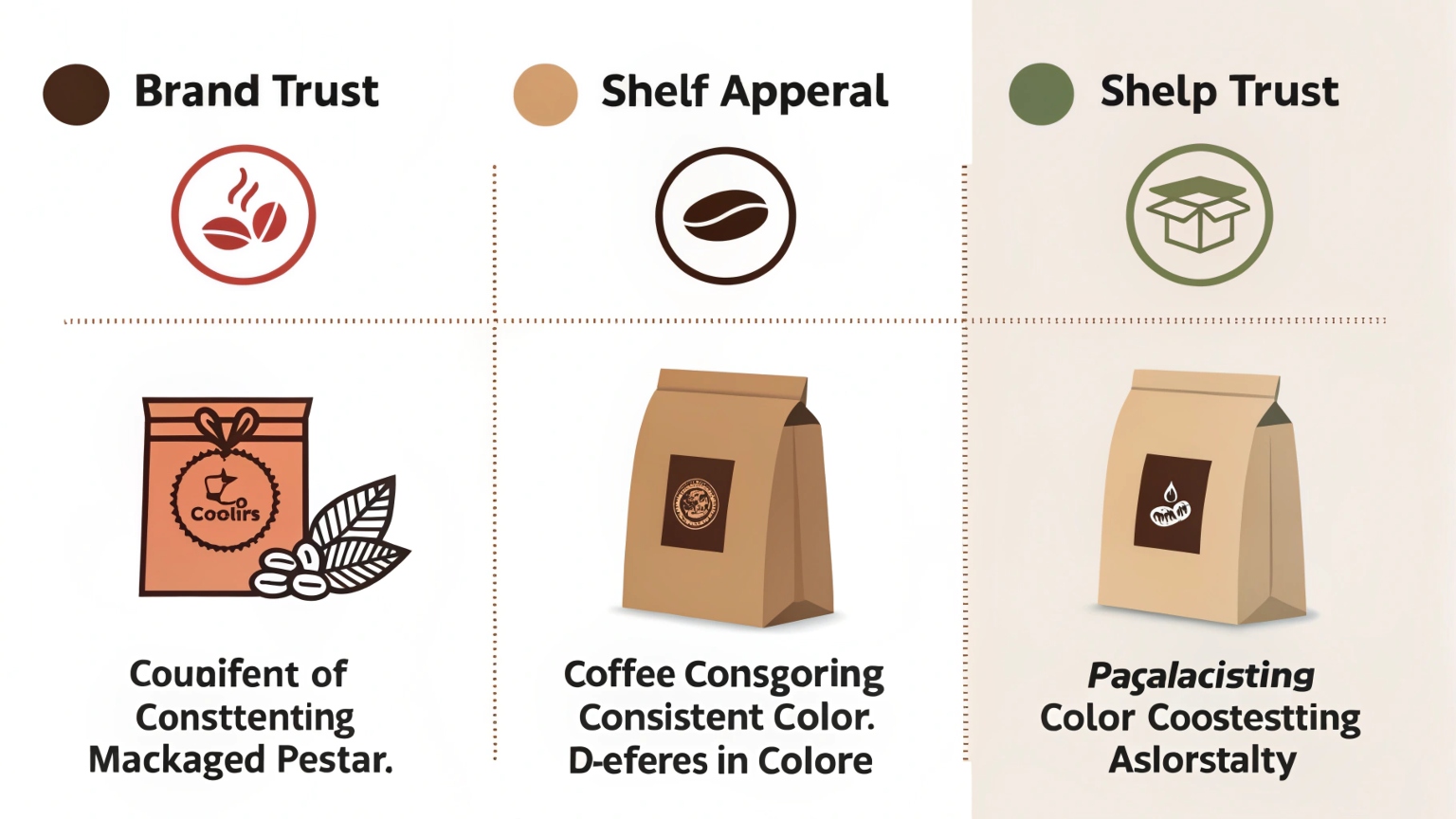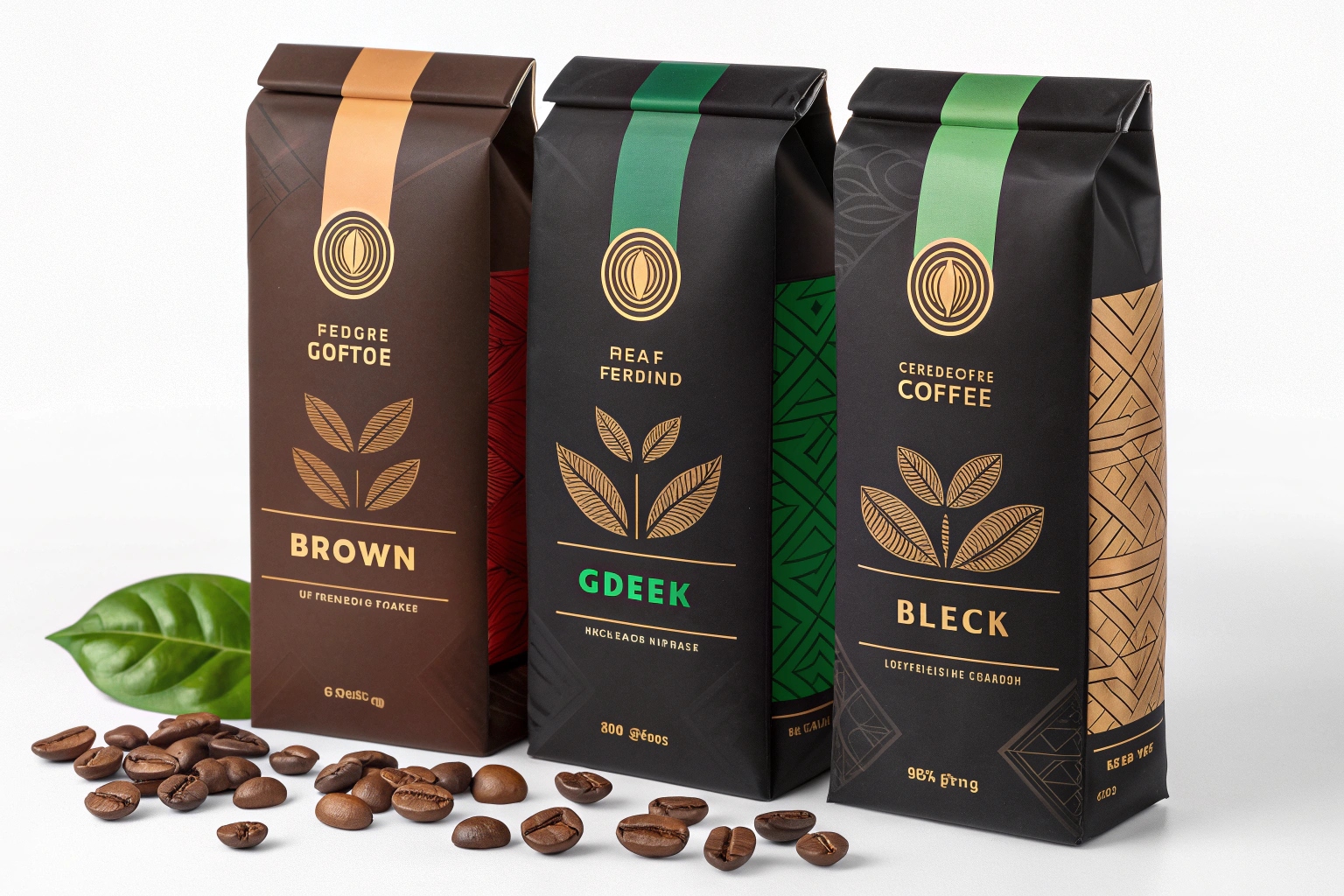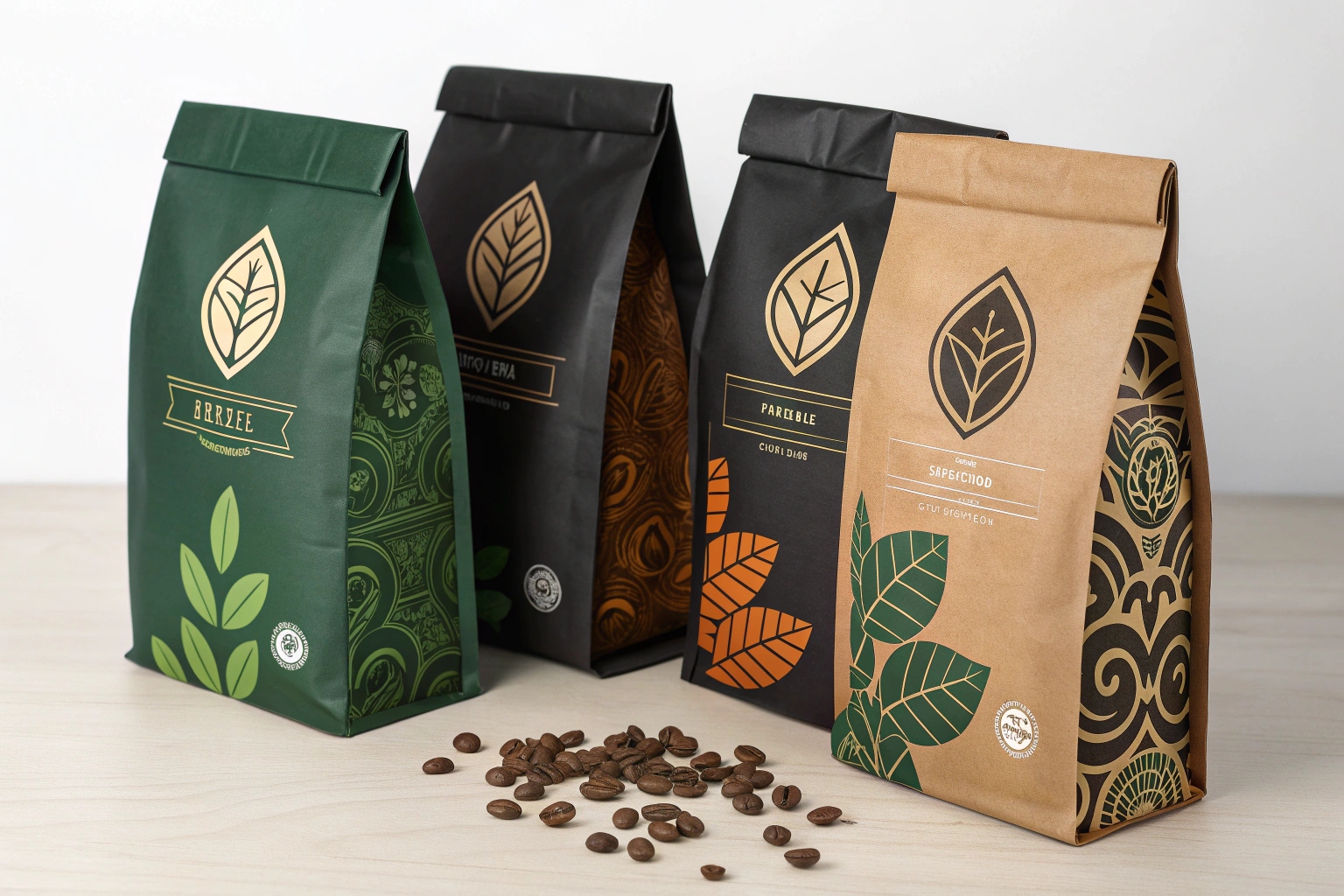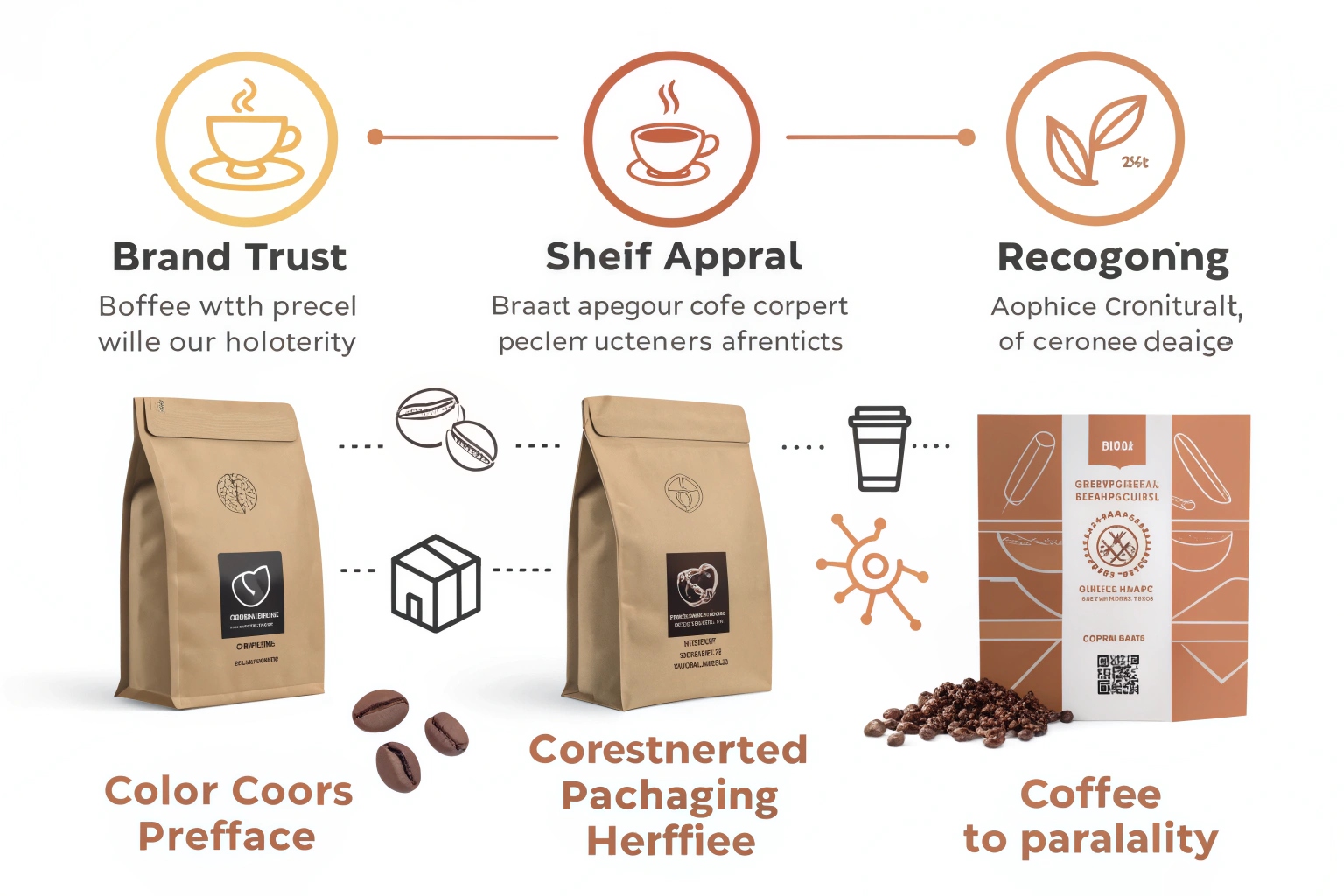I used to ignore color consistency in my packaging until customers started doubting the quality of the coffee inside.
Color consistency1 builds brand trust2, enhances recognition, and sets quality expectations for buyers.
When I fixed color mismatch3es across product lines, I noticed better feedback and stronger customer loyalty almost immediately.
Why is color consistency important?
Color is more than decoration—it’s communication.
Consistent use of color signals reliability, improves shelf appeal4, and reinforces brand memory.

Dive Deeper: How inconsistency creates confusion
Colors act as visual anchors5. When customers see the same shade of brown or green across your coffee line, they connect it to your brand.
But when the same product line appears in slightly different tones—due to poor printing control or switching materials—customers start to question:
- Is this the same blend?
- Has the quality changed?
- Is this authentic?
I’ve worked with buyers who reported that even minor tone differences across batches led to customer complaints. Especially for high-end specialty coffee brands, even the packaging must "taste premium."
Why this matters in B2B
Large buyers often resell under their own brand. They want consistency—not just in coffee taste but also in packaging. If we can’t offer uniformity, they’ll switch to another supplier who can.
| Problem Caused by Color Inconsistency | Buyer Reaction |
|---|---|
| Different shades of brand color | Brand looks unprofessional |
| Variation in same SKU | Doubt in product quality |
| Color mismatch on display | Reduced visual impact |
| Wrong tone on reorders | Risk of returns or complaints |
What is the best color for coffee packaging?
People often ask me which color sells the best. It depends—but some shades perform better than others.
Earth tones like brown, black, and green are most trusted; metallics add luxury; bold colors grab attention.

Dive Deeper: What colors really mean to customers
Color influences perception before the customer even opens the bag. Let’s look at what some common packaging colors signal:
Brown
Often used for organic or roasted coffee. It feels earthy, warm, and natural. Works great for craft-style brands.
Black
Classic and bold. Often used for strong espresso or premium blends6. It gives a sense of strength and richness.
Green
Tied to sustainability and freshness. Many eco-friendly or decaf lines use green as a visual cue.
Metallic (Gold/Silver)
Gives an upscale, luxurious feel. Great for gift packs or limited editions.
White
Clean and minimalist. Often seen in Nordic brands. Signals light roast or high-end specialty blends.
Bright colors (red, blue, orange)
Catchy on shelves but must align with flavor profile. Misused, they may confuse or cheapen the product image.
| Color | Impression Given | Best Used For |
|---|---|---|
| Brown | Natural, earthy | Organic or medium roast |
| Black | Bold, premium | Espresso, dark roast |
| Green | Fresh, sustainable | Eco-line or decaf |
| Metallic | Luxurious, exclusive | Specialty or gift packs |
| White | Minimalist, clean | High-end or light roast |
| Bright | Attention-grabbing | Flavored or youth-market blends |
What I’ve learned is this: The color you choose isn’t just about standing out. It’s about aligning the customer’s expectation with the product inside.
Does package color affect customer product quality ratings?
I once ran an A/B test with two identical coffee blends—just different packaging colors. The results shocked me.
Yes. Customers often judge coffee quality based on packaging color before tasting.

Dive Deeper: How colors bias perception
Even though the coffee was identical, the group given the black-and-gold pouch rated it richer and more premium than the one in the plain kraft bag. Same roast, same origin—but a different response.
This is called sensation transference7—the idea that we project packaging cues onto the product experience. It’s common in food and beverage.
Darker shades = stronger taste
Buyers often assume dark packaging means a bolder or stronger brew.
Matte finish = more premium
A matte black or matte silver pouch is often associated with high-quality brands.
Poor color printing8 = poor coffee?
Yes, even print quality affects perceived taste. If the label is off-center or the color is faded, the coffee is assumed to be old or low-grade.
| Packaging Signal | Perceived Quality |
|---|---|
| Matte finish | Premium, artisanal |
| Glossy but clear plastic | Cheap, lower-grade |
| Metallic pouch | Rich flavor, luxury |
| Kraft bag with valve | Fresh, natural, trustworthy |
| Mismatched colors | Inconsistent, risky |
This is why I always recommend running visual consistency checks before mass production. At IMIPAK, we’ve set up color proofing and digital mockup previews for all clients.
How does coffee packaging impact flavor and freshness?
Packaging isn't just about how it looks—it’s about what it protects.
The right coffee packaging shields beans from light, moisture, oxygen, and air—all of which ruin freshness.

Dive Deeper: Form meets function in packaging
Roasted coffee begins to lose its flavor within hours if left exposed. The packaging design9, structure, and even its color can slow or accelerate that process.
Light-blocking color layers
Dark or opaque packaging—especially black, matte green, or metallic layers—protects the beans from UV damage. Transparent or white pouches need an inner barrier to be equally effective.
Multi-layer films
Our factory uses PET/VMPET/PE or Kraft/AL/PE for most coffee pouches. These layers block light, air, and moisture better than basic plastic.
Valve placement
One-way degassing valves10 let CO₂ escape without letting air in. If placed wrong or missing, the pouch may bloat or affect bean integrity.
Heat sealing and zippers
Even if the pouch has all the right layers, if it’s not properly sealed, freshness leaks out. That’s why we offer double-seal systems for high-volume buyers.
| Packaging Element | Impact on Freshness |
|---|---|
| Matte black film | Blocks light, protects oils |
| Aluminum foil layer | Seals out moisture and air |
| Degassing valve | Prevents gas buildup |
| Resealable zipper | Extends shelf life post-opening |
| Heat-sealed edges | Maintains factory-level freshness |
In many cases, brands that only change colors or finish—say from glossy to matte—report better shelf stability. It’s not magic, just better barrier control.
Conclusion
Color isn’t decoration—it’s trust, function, and flavor protection.
-
Understanding color consistency can enhance your brand's trust and recognition, crucial for customer loyalty. ↩
-
Exploring brand trust can reveal how it influences customer decisions and long-term loyalty. ↩
-
Color mismatch can harm brand perception; find out how to avoid this common pitfall. ↩
-
Shelf appeal is vital for attracting customers; learn how to optimize it for better sales. ↩
-
Visual anchors help in brand recognition; discover how they can strengthen your marketing strategy. ↩
-
Understanding premium blends can help you target the right market segment effectively. ↩
-
Understanding sensation transference can help you design packaging that enhances perceived quality. ↩
-
Color printing quality can influence consumer perception; find out how to ensure high standards. ↩
-
Effective packaging design can significantly impact sales; explore best practices to improve yours. ↩
-
Degassing valves are essential for maintaining coffee quality; discover how they work. ↩


